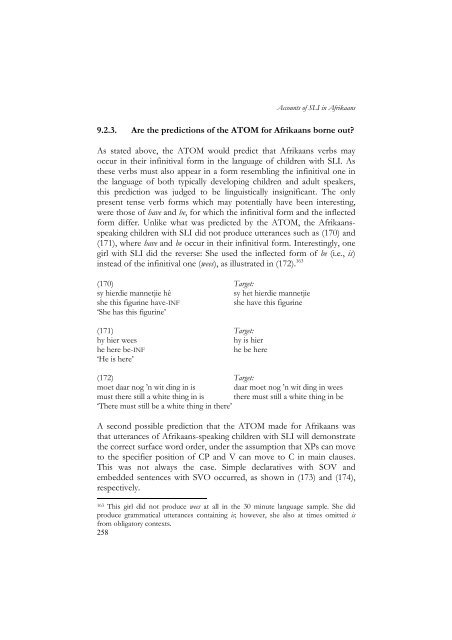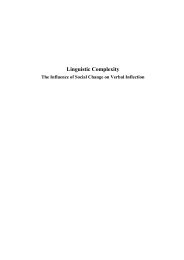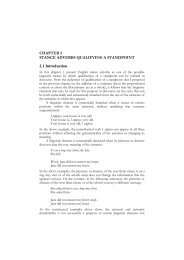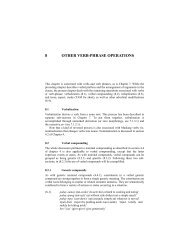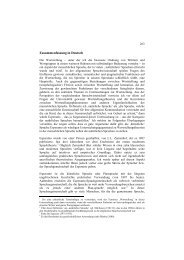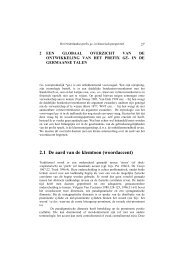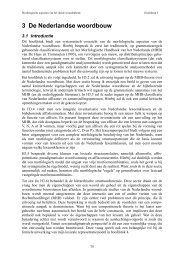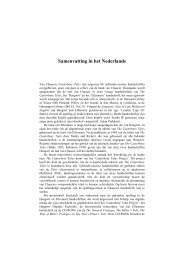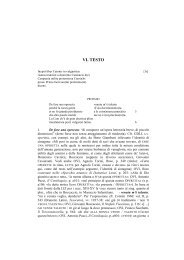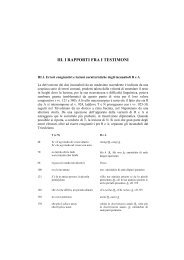Chapter 9 - LOT publications
Chapter 9 - LOT publications
Chapter 9 - LOT publications
Create successful ePaper yourself
Turn your PDF publications into a flip-book with our unique Google optimized e-Paper software.
Accounts of SLI in Afrikaans<br />
9.2.3. Are the predictions of the ATOM for Afrikaans borne out?<br />
As stated above, the ATOM would predict that Afrikaans verbs may<br />
occur in their infinitival form in the language of children with SLI. As<br />
these verbs must also appear in a form resembling the infinitival one in<br />
the language of both typically developing children and adult speakers,<br />
this prediction was judged to be linguistically insignificant. The only<br />
present tense verb forms which may potentially have been interesting,<br />
were those of have and be, for which the infinitival form and the inflected<br />
form differ. Unlike what was predicted by the ATOM, the Afrikaansspeaking<br />
children with SLI did not produce utterances such as (170) and<br />
(171), where have and be occur in their infinitival form. Interestingly, one<br />
girl with SLI did the reverse: She used the inflected form of be (i.e., is)<br />
instead of the infinitival one (wees), as illustrated in (172). 163<br />
(170) Target:<br />
sy hierdie mannetjie hê<br />
sy het hierdie mannetjie<br />
she this figurine have-INF<br />
she have this figurine<br />
‘She has this figurine’<br />
(171) Target:<br />
hy hier wees<br />
hy is hier<br />
he here be-INF<br />
he be here<br />
‘He is here’<br />
(172) Target:<br />
moet daar nog ’n wit ding in is daar moet nog ’n wit ding in wees<br />
must there still a white thing in is there must still a white thing in be<br />
‘There must still be a white thing in there’<br />
A second possible prediction that the ATOM made for Afrikaans was<br />
that utterances of Afrikaans-speaking children with SLI will demonstrate<br />
the correct surface word order, under the assumption that XPs can move<br />
to the specifier position of CP and V can move to C in main clauses.<br />
This was not always the case. Simple declaratives with SOV and<br />
embedded sentences with SVO occurred, as shown in (173) and (174),<br />
respectively.<br />
163 This girl did not produce wees at all in the 30 minute language sample. She did<br />
produce grammatical utterances containing is; however, she also at times omitted is<br />
from obligatory contexts.<br />
258


